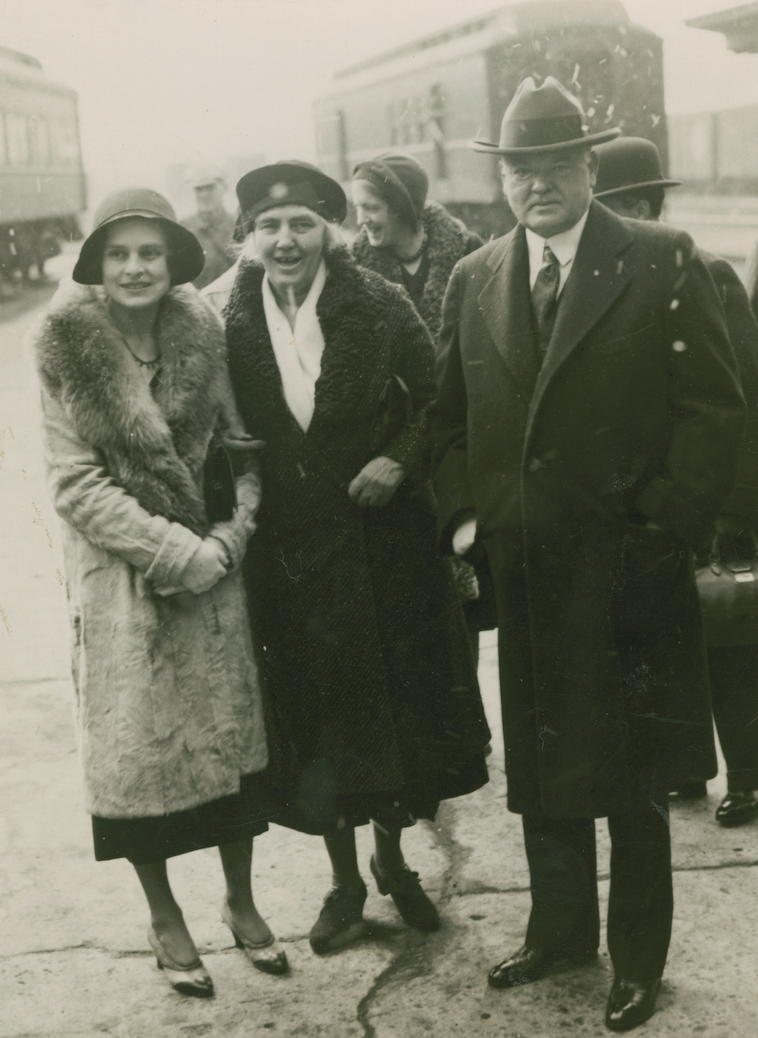In late September 1930, dispatches from Washington, D.C., revealed that Herbert Hoover Jr., the son and namesake of the president of the United States, was planning to convalesce through the winter somewhere in North Carolina. According to a Sept. 21 article in The Asheville Citizen, Hoover Jr. suffered “a slight tubercular infection.”
Quick to act, the local Chamber of Commerce invited the president’s son to recuperate in Asheville. Not to be overlooked, the Hendersonville Chamber of Commerce mirrored the move — albeit a day late and a dollar short.
On Oct. 17, 1930, The Asheville Citizen reported on Hoover Jr.’s decision to spend the winter in Buncombe County, atop Sunset Mountain, where he and his family would lease Blue Briar Cottage — an eight-room/two-bath white frame house, whose previous owners included E.W. Grove and former presidential hopeful William Jennings Bryan.
Work to prepare the cottage for the family’s arrival was already underway by the time the paper made the announcement.
In the same Oct. 17 article, The Asheville Citizen featured a statement by Fred L. Weede, manager of the chamber. Along with celebrating Hoover Jr.’s imminent arrival, Weede put the community on notice. “Assurances have been given that the privacy and rest necessary in his case will be given him by all our people,” Weede declared.
Early community activities, however, raised some doubts. On Oct. 21, 1930, the paper reported that “hundreds of persons passed to view the building and see what progress is being made in preparing it for occupancy by the president’s son[.]”
But the early curiosity seems to have waned. By all accounts, Hoover Jr.’s six-month stay was a relatively quiet affair. He arrived Nov. 1 by train, accompanied by White House physician Dr. Joel T. Boone, who eventually placed Hoover Jr. under the care of a local doctor, Bernard R. Smith.
Meanwhile, Hoover Jr.’s wife, Margaret, split her time among California, North Carolina and Washington, D.C. The couple’s three children did the same, at one point living with their grandparents inside the White House while their father continued in his recovery.
Of course, throughout Hoover Jr.’s convalescence, local reporters fueled rumors over when President Hoover would visit. In a Nov. 4 article, the paper asserted the commander-in-chief was headed to Asheville for Thanksgiving. In the same piece, the paper claimed that along with recuperating from tuberculosis, Hoover Jr. was receiving treatment for a “nervous condition.” This diagnosis does not appear in subsequent articles.
Thanksgiving came and went without the president. Reporters shifted their attention to Christmas. But even Old St. Nick couldn’t bring the nation’s leader to the mountains.
The winter dragged on. Then finally, on March 8, 1931, President Herbert Hoover rolled into Asheville on the Southern Railway at 8:20 a.m., accompanied by his wife, Lou, Dr. Boone, and several aides and Secret Service agents. The Asheville Citizen emphasized that Hoover refused “a private car … insisting on traveling in a compartment in a regular Pullman car.”
The following day’s paper featured a more detailed account of the president’s brief, eight-hour visit. A light snowfall powdered Hoover’s coat and hat as he stepped off the train and posed for photographers. Though he offered no formal statement, Hoover did say he was “tremendously cheered” by his son’s improvement and expressed regret that he was unable to remain in “this beautiful section longer.”
From the train station, the president and his entourage made their way up Sunset Mountain. Throughout the day, The Asheville Citizen wrote, “The President appeared at the windows of the cottage and gazed out on the mountain ranges.” By afternoon, the sun had emerged, affording Hoover “a clear view of Pisgah,” the paper continued. “Many of the peaks were snow-capped.”
An estimated crowd of 1,000 assembled at the train station to bid Hoover and the first lady farewell. According to the paper, additional crowds formed at Old Fort and Hickory. “Mr. Hoover was obviously pleased … smiling broadly and waving vigorously,” The Asheville Citizen declared.
Shortly after his father’s departure, Hoover Jr. did the same. On April 28, he left Asheville for good, boarding the Southern Railway Train No. 16, bound for Washington with plans to head to his home in California later that summer.
On May 1, 1931, The Asheville Citizen ran an excerpt from the Charlotte Observer, which stated:
“After about six months stay at Asheville, Herbert Hoover, Jr., is privileged to go anywhere he may want to journey, his health built up and safely fortified against relapse with ordinary care. He first goes to his father’s house, to let the folks see how finely he has been patched up thense he crosses the continent to enjoy life as a cured man. And wherever the young man may go, he will be a walking advertisement for the mountain climate of North Carolina. Our state thus has ‘one on’ California.”
Editor’s note: Peculiarities of spelling and punctuation are preserved from the original document.



Curious as to what “ailed” the younger Hoover.